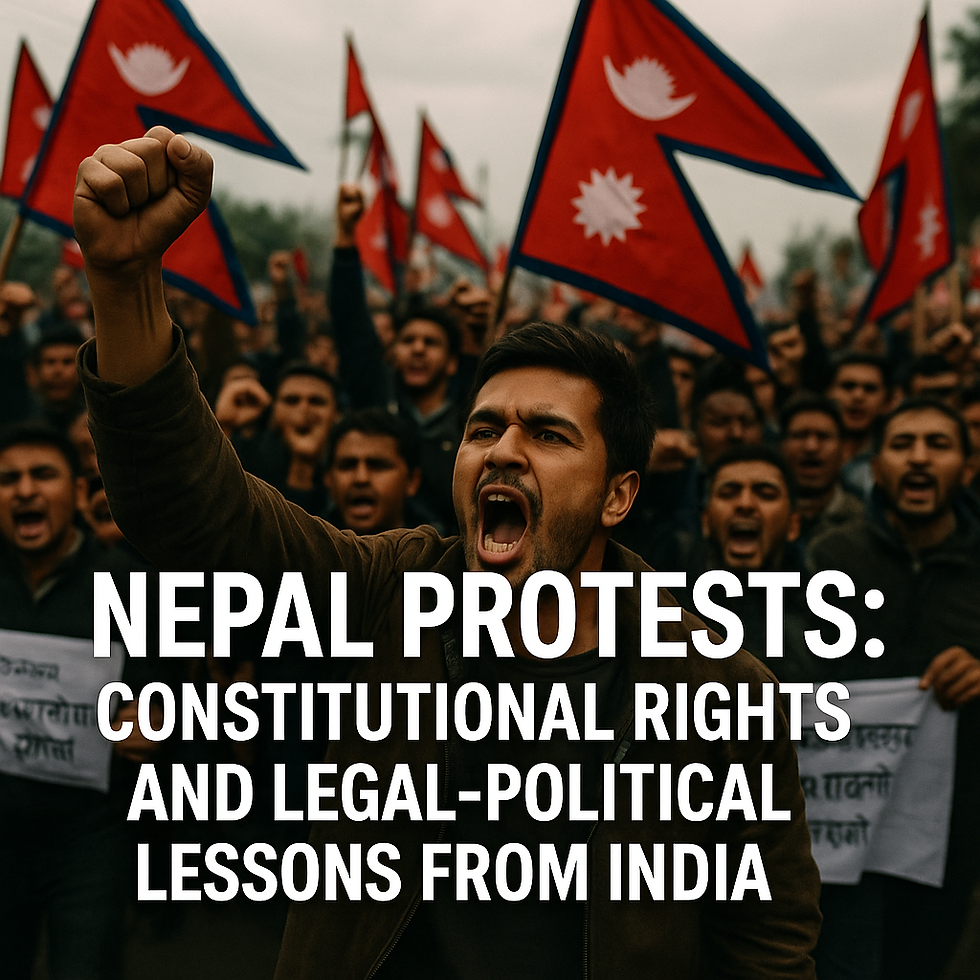Bombay High Court on Maratha Quota Protests: Legal Stand, Orders, and Key Takeaways
- Amit Tiwari

- Sep 3
- 3 min read

The recent Maratha reservation protests in Mumbai under activist Manoj Jarange Patil witnessed lakhs of participants occupying Azad Maidan and adjoining public streets. The Bombay High Court intervened with a series of stern observations and directions, balancing the constitutional right to protest with the State’s obligation to maintain public order. This article breaks down the Court’s stand, the legal principles considered, and the reasoning behind its orders.
1. Right to Protest vs. Public Order
The Court acknowledged that citizens have the right to protest under Article 19(1)(a) (freedom of speech) and 19(1)(b) (right to assemble peacefully). However, it emphasized that these rights are not absolute.
Under Article 19(3), reasonable restrictions can be imposed in the interest of public order, sovereignty, and integrity of India.
The High Court noted that while protest is a democratic right, it cannot be exercised in a way that paralyzes the city or endangers law and order.
2. Protest at Azad Maidan – Permission and Limits
The Court observed that permissions granted to protest at Azad Maidan were conditional. Reports showed that instead of 5,000 permitted participants, the number swelled to nearly 3 lakh.
The Bench termed the occupation of Azad Maidan and adjoining streets as “completely illegal”.
It directed that protests cannot be carried out indefinitely in public spaces, citing the principle laid down by the Supreme Court in Amit Sahni v. Commissioner of Police (Shaheen Bagh case, 2020), where indefinite blockage of public ways was held impermissible.
3. Directions to Vacate Streets and Azad Maidan
The Bombay High Court set a clear deadline: protestors must vacate Azad Maidan and Mumbai streets by a specified time, failing which the administration must act.
The Court warned that if the State failed to enforce its own rules, the Court would be compelled to pass coercive orders.
This aligns with the judiciary’s duty to uphold the majesty of law, ensuring that government orders are not reduced to mere paper directions.
4. Criticism of the State Government
The Court did not spare the State. It expressed strong dissatisfaction with the government’s inability to control the crowd:
Judges remarked that even a sitting High Court judge had to walk to court due to traffic blockages.
The Bench stated, “We are very, very, very unhappy” with the State’s lax enforcement.
This reflects the principle that State authorities are trustees of public order and cannot abdicate their responsibility.
5. Liability for Damage to Public Property
A significant order was the Court’s direction to protest organisers, including Jarange Patil, to file affidavits explaining their role in the damage caused.
This stems from the Public Property Damage Act, 1984 and the Supreme Court’s rulings in In Re: Destruction of Public & Private Properties (2009), where organisers of agitations can be held personally liable for damage.
The High Court made it clear that accountability will not only be political but also legal and financial.
6. Balancing Act: Protest vs. Rule of Law
The Court’s stance reflects a consistent judicial approach:
Protest is a constitutional right, but subject to procedure and restrictions.
State has dual obligations: to safeguard democratic expression, and simultaneously protect the rights of the silent majority who suffer due to traffic jams, school closures, and disruption of daily life.
Courts, therefore, act as a referee—ensuring neither side oversteps its constitutional limits.
7. The Road Ahead
While the immediate protest has been called off, the High Court’s orders set a precedent for future mass movements:
Organisers must seek and strictly follow permissions.
State must ensure compliance with law and prevent chaos.
Courts will not hesitate to intervene where constitutional rights are misused to create lawlessness.
Conclusion
The Bombay High Court’s handling of the Maratha quota protests reaffirms a crucial legal principle: democracy protects dissent, but not disorder. By directing protestors to vacate, holding organisers accountable, and censuring the State, the Court has struck a balance between individual rights and the collective right of society to law and order.
For lawyers, activists, and policymakers, this case serves as a reminder that the rule of law remains the bedrock of any protest movement—and the judiciary will ensure it is not compromised.



Comments